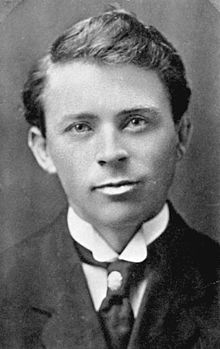 Donahue at Auburn in 1909 | |
| Biographical details | |
|---|---|
| Born | June 14, 1876 County Kerry, Ireland |
| Died | December 11, 1960 (aged 84) Baton Rouge, Louisiana, U.S. |
| Playing career | |
| Football | |
| 1899–1903 | Yale |
| Position(s) | Quarterback |
| Coaching career (HC unless noted) | |
| Football | |
| 1904–1906 | Auburn |
| 1908–1922 | Auburn |
| 1923–1927 | LSU |
| 1931–1932 | Spring Hill (assistant) |
| 1934 | Spring Hill |
| 1935–1936 | Spring Hill (freshmen) |
| Basketball | |
| 1905–1921 | Auburn |
| Baseball | |
| 1925–1926 | LSU |
| Tennis | |
| 1946–1947 | LSU |
| Golf | |
| 1944–1945 | LSU |
| Administrative career (AD unless noted) | |
| 1929–1936 | Spring Hill |
| 1937–1948 | LSU (intramural director) |
| Head coaching record | |
| Overall | 133–59–8 (football) 72–81 (basketball) 15–15–3 (baseball) 0–7 (tennis) |
| Accomplishments and honors | |
| Championships | |
| Football 6 SIAA (1904, 1908, 1910, 1913, 1914, 1919) | |
| College Football Hall of Fame Inducted in 1951 (profile) | |
Michael Joseph "Iron Mike" Donahue (June 14, 1876 – December 11, 1960) was an American football player, coach of football, basketball, baseball, tennis, track, soccer, and golf, and a college athletics administrator. He served as the head football coach at Auburn University (1904–1906, 1908–1922), at Louisiana State University (1923–1927), and at Spring Hill College (1934).
In 18 seasons coaching football at Auburn, Donahue amassed a record of 106–35–5 and had three squads go undefeated with four more suffering only one loss. His .743 career winning percentage is the second highest in Auburn history, surpassing notable coaches such as John Heisman and Ralph "Shug" Jordan. Donahue Drive in Auburn, Alabama, on which Jordan–Hare Stadium is located and the Tiger Walk takes place, is named in his honor, as is Mike Donahue Drive on the LSU campus.
Donahue also coached basketball (1905–1921), baseball, track, and soccer (1912–?)[1] at Auburn and baseball (1925–1926) and tennis (1946–1947) at LSU. He was inducted as a coach into the College Football Hall of Fame as part of its inaugural class in 1951.
- ^ Michael Donahue (1912). C. E. Sauls; C. W. Shelverton; J. K. Newell; H. W. Grady; W. B. Nickerson (eds.). "Soccer Football". Glomerata (Annual). Vol. 15. Auburn, AL: Alabama Polytechnic Institute. p. 230. Archived from the original on July 27, 2011. Retrieved March 21, 2011.
